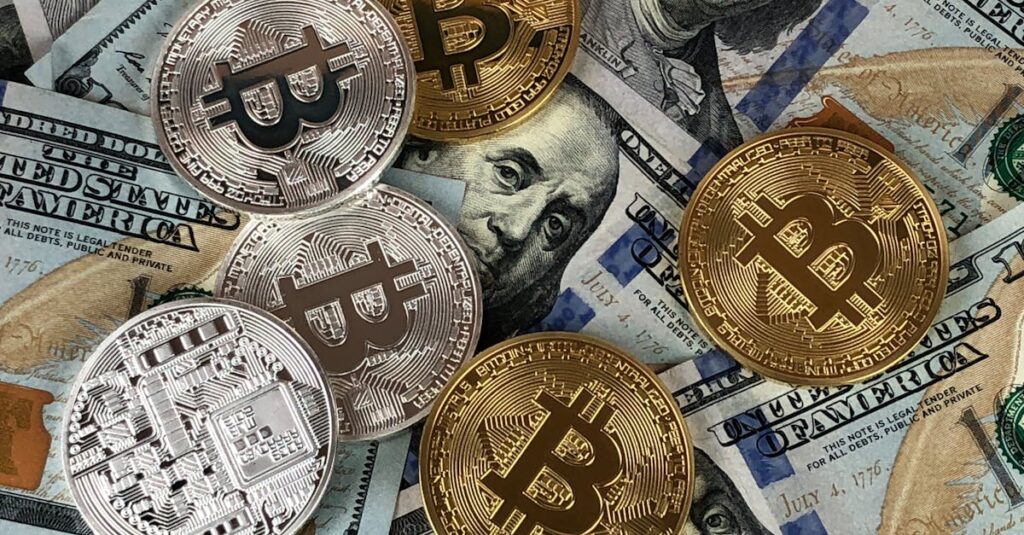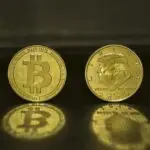How to Buy Bitcoin Safely in 2025
A Complete Beginner’s Guide Backed by Expertise

In 2025, owning Bitcoin has become more mainstream than ever. You’ll hear about it on the news, see it offered by banks, and maybe even get paid in it if you work in tech or freelancing. But if you’ve never bought Bitcoin before, the process can still feel overwhelming—especially with horror stories of scams, wallet losses, and shady platforms floating around the internet.
This guide breaks everything down for beginners, with a strong focus on safety, clarity, and confidence. Whether you’re investing ₹1,000 or $10,000, this will help you avoid mistakes and make informed decisions.
First, What Exactly is Bitcoin?
Bitcoin is more than just digital money. It’s a decentralized currency that operates without banks, borders, or middlemen. Unlike the rupee, dollar, or euro, it isn’t printed by governments. It’s created and verified by a global network of computers called “miners,” and it runs on blockchain technology—a public, unchangeable record of every transaction ever made.
What makes Bitcoin special is scarcity. Only 21 million bitcoins will ever exist, and as of 2025, over 19.5 million are already mined. That’s why some people compare it to digital gold—it’s limited, hard to produce, and holds long-term value in the eyes of many investors.
But here’s the thing: owning Bitcoin gives you total control over your money—and with that comes the need to understand how to buy and store it safely.
Why People Are Buying Bitcoin in 2025
The reasons vary. Some see Bitcoin as a hedge against inflation, especially in countries where the national currency loses value rapidly. Others use it as an investment, hoping the price will rise over time. And some are simply drawn to the idea of a decentralized financial system—where nobody can freeze your funds or block your transactions.
In 2025, Bitcoin is also:
- Accepted by many global retailers and travel companies
- Used as collateral in crypto loans
- Earned as income in Web3 jobs
- Held by institutions and governments alike
But no matter your reason for buying it, the golden rule still applies: your security is your responsibility.
What You Need Before Buying Bitcoin
Before we jump into the actual steps, let’s prepare the ground. Here’s what you need in place:
1. A Reliable Device
You’ll want to use a device you trust—ideally your personal laptop or smartphone. Public computers or shared devices at cafes or colleges? Big no. They might have spyware that could compromise your data.
If you’re especially cautious, consider installing a VPN to hide your internet activity and protect yourself from local threats like DNS leaks or man-in-the-middle attacks.
2. An Understanding of Wallets
A wallet is where you store your Bitcoin. But unlike a physical wallet, a crypto wallet doesn’t hold your Bitcoin in a file—it stores the private keys that let you access and control your coins on the blockchain.
There are two broad types:
- Custodial wallets (like the ones on exchanges): Easy to use, but you don’t truly own the coins. If the exchange shuts down, your coins might vanish.
- Non-custodial wallets: You own your keys, and thus your Bitcoin. Examples include mobile apps like Trust Wallet, BlueWallet, or hardware devices like Ledger.
You’ll want a non-custodial wallet once you’ve made your first purchase. But don’t worry—you can start with an exchange wallet and then transfer your Bitcoin when ready.
3. Basic ID Proofs for KYC
Most regulated exchanges will ask you to complete Know Your Customer (KYC) verification. This might include:
- A government-issued ID (passport, Aadhaar, driver’s license)
- A selfie or video verification
- Occasionally, a proof of address (utility bill, bank statement)
It might feel invasive, but it’s required by law in most countries and adds an extra layer of protection against fraud and terrorism financing.
Choosing the Right Platform to Buy Bitcoin
This is one of the most important decisions in your crypto journey. Here’s what to look for:
Security
A good exchange takes security seriously. That means:
- 2FA (Two-Factor Authentication)
- Cold storage for user funds (offline protection)
- Insurance coverage (for fiat or sometimes crypto)
- Transparent communication during outages or updates
Compliance
Is the platform licensed and regulated in your country? A regulated exchange is less likely to disappear overnight.
- In the US: Look for FINCEN registration.
- In India: Platforms like CoinDCX or WazirX are FIU-IN compliant.
- In Europe: MiCA-compliant exchanges offer strong consumer protections.
Ease of Use
If you’re a beginner, choose a platform with a simple interface and good customer support. Apps like Coinbase, Kraken, and Binance Lite are beginner-friendly and have strong tutorials built into their systems.
Low Fees and Fair Pricing
Some platforms charge a fee of 0.1% per trade, while others might go up to 1% or more. Also, check the spread—the gap between buy and sell prices. A wider spread means you’re paying more.
Funding Your Account
Once you’ve created an account and passed KYC, it’s time to add money.
Most Common Methods in 2025:
- Bank Transfers (NEFT, IMPS, SEPA, ACH): Lower fees, good for larger sums.
- UPI (India): Instant and very popular.
- Debit/Credit Cards: Fast, but might come with extra charges.
- Apple Pay or Google Pay: Available on mobile-friendly exchanges.
- P2P Transfers: Used where banking support is limited. Platforms like Binance offer escrow-protected peer-to-peer trades.
If you’re unsure, try depositing a small test amount before going big.
Buying Your First Bitcoin
Once your money is in the account, you’ll typically be given two options:
Market Order
This lets you buy Bitcoin instantly at the current market price. It’s fast and easy—perfect for beginners.
Limit Order
You set a price at which you’d like to buy. If Bitcoin drops to that level, your order executes. It gives you control, but you’ll need to wait.
Tip: Start small. You don’t need to buy a whole Bitcoin. Even ₹100 or $10 gets you started. This helps you get comfortable with how transactions work.
Storing Your Bitcoin Safely
Once your Bitcoin is bought, your job isn’t over. In fact, this is where the serious responsibility begins.
If you leave your Bitcoin on the exchange, you’re trusting them with your money. That’s convenient—but risky.
Your Options:
- Hot Wallets (online, easy access):
- Great for small amounts or daily use
- Apps like Trust Wallet, Exodus, or BlueWallet
- Great for small amounts or daily use
- Cold Wallets (offline, ultra-secure):
- Best for storing large amounts long-term
- Devices like Ledger Nano X or Trezor Model T
- Immune to online hacks, but don’t lose your recovery phrase!
- Best for storing large amounts long-term
- Paper Wallets:
- You print your keys and store them offline
- Cheap but prone to damage or loss
- You print your keys and store them offline
Whatever you choose, backup your seed phrase (usually 12 or 24 words) and never store it digitally. Write it down, laminate it, or use metal recovery sheets that withstand fire and water.
Avoiding Scams in 2025
Crypto scams have evolved. Here are some common red flags to watch out for:
- Fake Investment Promises: No one can “double” your Bitcoin overnight.
- Phishing Links: Always double-check the URL before entering credentials.
- Fake Apps: Download wallets and exchanges only from official sources.
- Romance Scams: Don’t send crypto to online “partners” or strangers.
Use bookmarks for your exchanges, enable 2FA, and never share your recovery phrase—not even with support staff.
Do You Need to Pay Tax on Bitcoin?
Yes—Bitcoin is taxable in most countries.
- In the US: It’s treated as property. You pay capital gains tax on profits.
- In India: A 30% flat tax applies to crypto gains, plus 1% TDS on transactions.
- In Europe: Tax laws vary by country, but standard frameworks are emerging under MiCA.
Use tools like Koinly, CoinTracker, or ClearTax Crypto to generate your tax reports automatically. Keep a log of every transaction and note the value in local currency at the time of buying and selling.
Expert Tips for First-Time Bitcoin Buyers
- Use Dollar-Cost Averaging (DCA): Invest small amounts regularly instead of going all-in. It helps smooth out price volatility.
- Avoid Trading: For beginners, trading is risky and often emotional. Buy and hold instead.
- Keep Learning: Follow trusted sources like CoinDesk, The Defiant, or newsletters like Bankless.
- Stay Calm: Bitcoin is volatile. Don’t panic on red days, and don’t FOMO during bull runs.
- Never Share Your Seed Phrase: Yes, it deserves repeating.
Start Small, But Start Smart
Buying Bitcoin in 2025 is easier than ever—but also more complex behind the scenes. By taking your time, starting small, and staying secure, you set yourself up for long-term success.
Bitcoin is not just an investment—it’s a new financial mindset. Learn it well, and it might serve you for decades to come.





